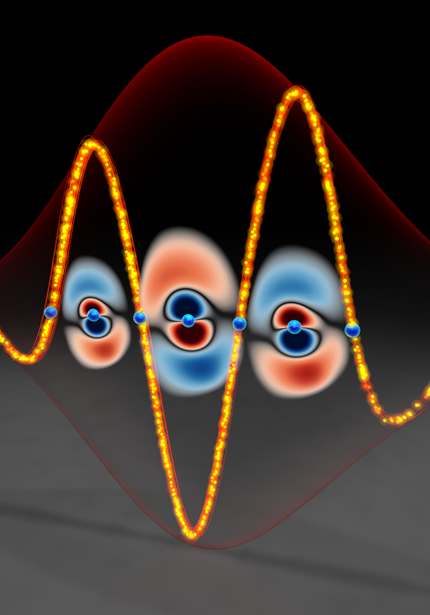A team of the Laboratory for Attosecond Physics (LAP), the Max-Planck Institute of Quantum Optics (MPQ) and the Ludwig-Maximilians University in collaboration with theorists (Prof. Kazuhiro Yabana) from University of Tsukuba optimized the interaction of light and glass in a way that facilitates its possible future usage for light wave driven electronics.
Light waves might be able to drive future transistors. The electromagnetic waves of light oscillate approximately one million times in a billionth of a second, hence with petahertz frequencies. In principle also future electronics could reach this speed and become 100.000 times faster than current digital electronics. This requires a better understanding of the sub-atomic electron motion induced by the ultrafast electric field of light. Now a team of the Laboratory for Attosecond Physics (LAP) at the Max-Planck Institute of Quantum Optics (MPQ) and the Ludwig-Maximilians University (LMU) and theorists from the University of Tsukuba combined novel experimental and theoretical techniques which provide direct access to this motion for the first time.

Referred from the release from Max Planck Institute of Quantum Optics
Releases from the related organizations
Max Planck Institute of Quantum Optics
Ludwig-Maximilians University
